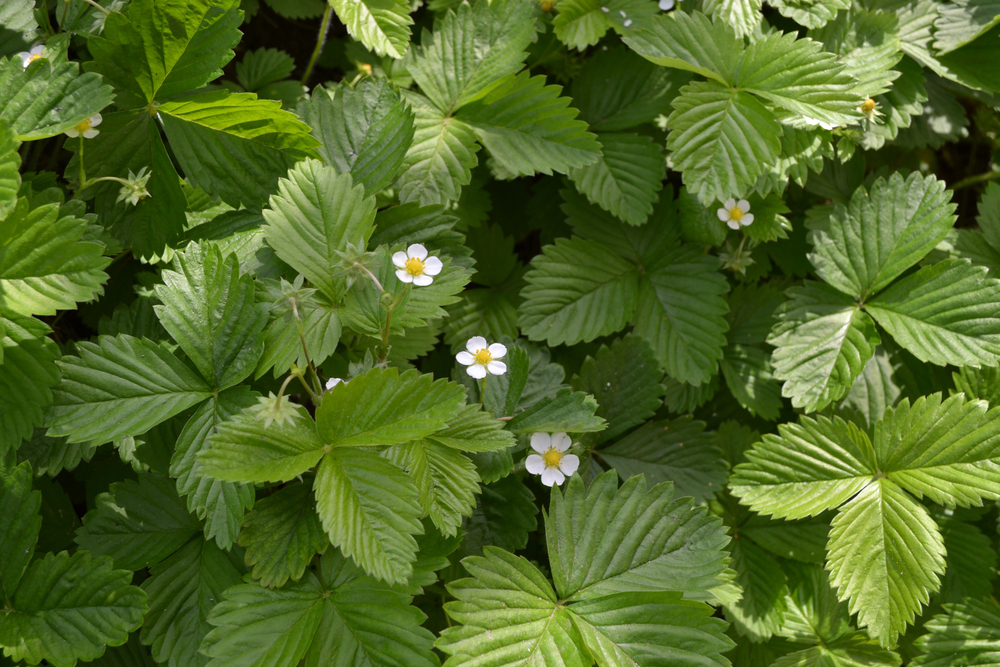What Is a Browse Plant?
White-tailed deer have many food sources. They obviously love acorns, apples, pears, and plums but will also happily eat other types of vegetation depending on the availability of different food sources and the time of the year.
Deer generally eat crops, grasses, fruit, mushrooms, nuts, and vegetation to sustain themselves. In summer, when there is plenty of fruit, deer will eat berries and other fruit.
When fall comes, oak trees drop their acorns and deer have another preferred food source until early winter.
During winter and early spring, deer opt for browse plants to feed themselves.
Come spring, new grasses shoot up. Until fruit trees blossom and produce fruit, deer will eat tender grass blades waiting to find more palatable vegetation.
Wildlife orchards must contain all sorts of vegetation to maintain a deer population throughout the year. If you only plant fruit trees, for example, then your deer will only be roaming your land for a few months before leaving to find food elsewhere. You need to invest in a wide selection of plants, trees, and shrubs to provide deer with multiple options and help them find shelter and food on your land.
How Do Deer Classify Their Food Sources?
While deer eat a vast variety of vegetation, they can still be picky about their choices. Deer have an internal classification of foods:
- Their preferred food sources are trees, shrubs, and other vegetation that deer will actively seek.
- Their second-preferred food source is browse plants, which they find as they wander around the land. They will happily eat these, particularly if their preferred food source is unavailable.
- Lastly, deer will eat non-preferred food sources like grasses in early spring when nothing else is available and they need the energy to keep going.
What Is a Browse Plant?
Browse plants are small flowering plants that grow in groups called “browses”. They usually grow in moist areas such as riverbanks, swamps, ditches, ponds, lakes, and marshes. The name comes from their habit of browsing around among other plants. White-tailed deer will munch the leaves, twigs, buds, and tender branches of these shrubs to feed themselves.
Many browse plants remain alive throughout the year. When winter comes, oaks drop their acorns and fruit trees are dormant, so deer need these browse plants to feed on.
What Types of Browse Plants Do Deer Favor?
Depending on the hardiness zone, the type of soil, precipitation, and other criteria, you will find different browse plants that thrive in your area.
Generally speaking, deer like white pine, sumac, dogwood, some birches, viburnums, vines, hawthorns, berry bushes, and beautyberries.
They are also partial to the strawberry bush (Euonymus Alatus)—an evergreen shrub native to Europe and Asia that has become naturalized in North America. It grows up to 2 m tall and bears small white flowers followed by red berries. The leaves are opposite, simple, 5-7 cm long, and serrated along their edges.
Deer will initially eat the most tender parts of the plant including the berries, the bud, and the new leaves. If they don’t have anything else to eat, they will move on to the chewier shrub sections like the twigs.
How Do I Know If White-Tailed Deer Are Browsing on My Land?
There is an inescapable sign that deer like the browse plants growing on your land: you will see many of these shrubs having shredded leaves about 6 feet from the ground, which is the height most deer can reach with their mouth.
If you see a horizontal line of munched leaves and twigs 6 feet from the ground and extending to several bushes and shrubs, then you know that deer have been visiting your land.
Interestingly, deer don’t have upper front teeth, so they can’t bite leaves. Instead, they shred, pinch, or tear the leaves with their lower teeth. Rabbits, on the other hand, have sharp teeth that make clear cuts on leaves. Observe the leaves of your browse plants to understand whether you have deer or other wildlife.
How Much Browsing?
Deer will browse plants to feed themselves but they might unintentionally disrupt the plant balance on the land.
Too much browsing means that the shrubs don’t have enough buds to grow and produce crops. If more than 50% of the new shrub growth has been eaten by deer, your land will find it hard to rejuvenate itself and produce bountiful crops.
In this case, you either have too many deer or too few browse plants for your deer population. We suggest you talk to us or hire a specialist to overview your land capability and propose a new planting strategy to follow for your land’s health and the sustenance of your white-tailed population.
For winter months, and providing adequate forage to sustain a population of deer, see our post on frost seeding.
Wildtree for Your Browse Plants
You will find several browse shrubs such as the strawberry bush in our white-tailed preferred selection. You can also benefit from free shipping on all orders and a 10% discount on orders over $1,000 and get 40% off when you pick up your order. Visit the Wildtree eshop, email us at [email protected], or contact us at 346-707-6023 to choose the right browse plants for your land and wildlife expectations.


